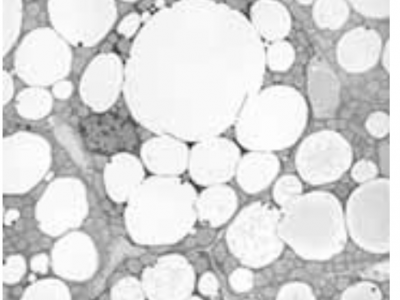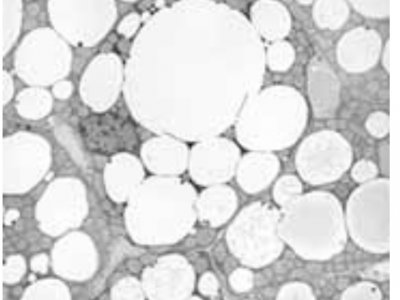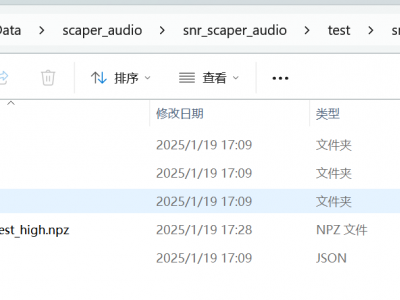Artificial Intelligence
Attention-Deficit/Hyperactivity Disorder (ADHD) is a common neurodevelopmental disorder that impairs a person's ability to concentrate, manage impulses, and maintain attention. ADHD can have a wide range of repercussions, including academic and professional difficulties as well as relationship and emotional issues. Individuals with ADHD may also have handwriting impairments, such as poor fine motor coordination, legibility, and writing speed. These writing difficulties may be related to dysgraphia, a specific writing impairment that affects people with ADHD.
- Categories:
 66 Views
66 ViewsThis dataset collection supports the research presented in the manuscript titled “Privacy-preserving and Verifiable Federated Learning for Biometric Data in Edge Computing” (submitted to IEEE Transactions on Knowledge and Data Engineering). It includes three curated biometric datasets—SigD, BIDMC, and TBME—that are used to evaluate the BPVFL framework’s performance in privacy-preserving and verifiable federated learning scenarios.
- Categories:
 19 Views
19 ViewsThis dataset collection supports the research presented in the manuscript titled “Privacy-preserving and Verifiable Federated Learning for Biometric Data in Edge Computing” (submitted to IEEE Transactions on Knowledge and Data Engineering). It includes three curated biometric datasets—SigD, BIDMC, and TBME—that are used to evaluate the BPVFL framework’s performance in privacy-preserving and verifiable federated learning scenarios.
- Categories:
 Views
ViewsThis dataset collection supports the research presented in the manuscript titled “Privacy-preserving and Verifiable Federated Learning for Biometric Data in Edge Computing” (submitted to IEEE Transactions on Knowledge and Data Engineering). It includes three curated biometric datasets—SigD, BIDMC, and TBME—that are used to evaluate the BPVFL framework’s performance in privacy-preserving and verifiable federated learning scenarios.
- Categories:
 Views
ViewsFair Use for Academic Research: If you use this dataset, please cite the following paper to ensure proper attribution
M. A. Onsu, P. Lohan, B. Kantarci, A. Syed, M. Andrews, S. Kennedy, "Leveraging Multimodal-LLMs Assisted by Instance Segmentation for Intelligent Traffic Monitoring," 30th IEEE Symposium on Computers and Communications (ISCC), July 2025, Bologna, Italy.
Preprint available here: https://arxiv.org/pdf/2502.11304
- Categories:
 123 Views
123 Views
Adverse driving conditions like darkness, rain, and fog present significant challenges to professional drivers as well as to computer vision algorithms in autonomous vehicles. One potential solution is to use an on-board system for real-time image translation, transforming weather-affected images into clear ones.
- Categories:
 8 Views
8 ViewsThis dataset contains 60,000 annotated records modeling UAV-based and IoT sensor-driven agriculture environments. Each record includes UAV imaging data (NDVI, NDRE, RGB damage score), IoT sensor values (NPK, pH, moisture, temperature, humidity), semantic labels (NDI, PDI), and metadata for energy consumption, latency, and service migration. It is designed for validating Digital Twin frameworks, semantic communication models, and Federated Deep Reinforcement Learning (FDRL) in precision farming.
- Categories:
 88 Views
88 ViewsThis dataset contains 10,000 synthesized sequences (10 seconds each) of North Atlantic Right Whale vocalizations for acoustic event detection research. It features four vocalization types (upcalls, gunshots, screams, moancalls) with varying durations from 0.8-4.2 seconds. The data is stratified across four signal-to-noise ratio levels (-10 to 10 dB) and split into training (7,000), validation (1,500), and test (1,500) sets.
- Categories:
 39 Views
39 Views
This dataset includes conjunctival and retinal images collected from both diabetic and healthy individuals to support research on diabetes-related vascular changes. For each subject, eight conjunctival images (four per eye: looking left, right, up, and down) are provided. Subjects with diabetes additionally have corresponding left and right retinal fundus images. Metadata for diabetic participants includes classification into subgroups: diabetes only, diabetes with retinopathy, or diabetes with related complications such as hypertension.
- Categories:
 53 Views
53 Views
We also provide a new data set CA on chassis assembly for further research in this field. CA is mainly used to study possible logical anomalies in assembly chassis. It has a total of 364 samples for the training set and 191 samples for the test set. The training set contains only normal samples, and the test set contains 93 normal samples and 91 abnormal samples. The main causes of logical anomalies contains several types of logical anomalies, such as quantity anomalies, location anomalies, size anomalies, matching anomalies and mixed anomalies, which poses additional challenges.
- Categories:
 20 Views
20 Views




